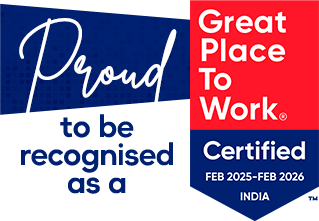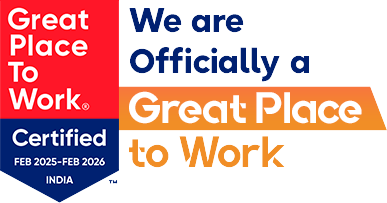Businesses increasingly depend on MSPs (Managed Service Providers) to embark on digital transformation to clinch digital-ready business aspirations. Once they find a value-adding MSP for their business requirements, both sides share, scrutinize and agree upon the contracts to affirm this business engagement. Now, the ball is in the MSP’s court, as they need to drive this engagement dexterously to bring valuable outcomes for clients, which eventually compounds positive revenue implications for the parties involved.
In MSP–client engagement, client onboarding is one of the fundamental activities that dictates how fruitful the engagement will be in addressing client problems through technological solutions. So, comprehensive planning is essential for the client onboarding process to ensure MSPs have a clear strategy involving careful preparation, effective communication, and teamwork. A well-crafted MSP client onboarding checklist plays a crucial role in streamlining the execution and shaping a smooth relationship – a critical juncture to instill confidence among the client-side decision makers & deliver phenomenal customer experience.
This blog emphasizes the critical role of the client onboarding process checklist in establishing strong client relationships and outlines key steps and strategies to ensure a smooth and successful onboarding process.
The need for an MSP Client onboarding checklist
When starting a new project, MSPs must remember the importance of considering all the essential things with enough details to set the client engagement in motion. Failing to keep a practical managed services onboarding checklist can lead to missed opportunities to gather vital client information, potentially hindering the ability to tailor services effectively and meet client expectations.
Below are the influential reasons why it carries such importance:
- It elevates reliability, authoritativeness and professionalism in your services.
- Streamlines the operations and saves valuable time for both your team and the client.
- Demonstrates your readiness, building trust and confidence in your services.
- It clearly outlines expectations and service roadmaps, reducing the potential for miscommunications and misunderstandings.
- Enables the early identification of potential issues, allowing for proactive solutions and efficient operations.
MSPS should use a customer onboarding process flowchart to visually represent the step-by-step process that a business follows to welcome new clients, from initial contact to full engagement.
MSP Client onboarding checklist
Gathering Client Information
Before finalising agreements, it is essential to have a comprehensive discussion with potential clients to grasp their distinct business needs. To facilitate this, offer a structured customer onboarding questionnaire in advance. This tool serves as a valuable guide during discussions, ensuring that no crucial details are missed, and helps prevent unexpected challenges in the future.
Importance of Information Gathering
Collecting basic client information is crucial for a smooth onboarding process. It helps ensure MSP understand the client’s needs and infrastructure, setting the stage for a tailored service experience.
Below is the sample list of data MSPs could gather from a client.
- Collect information about the client’s IT infrastructure, including hardware and software.
- Know their short and long-term business goals.
- Identify their security requirements and compliance concerns.
- Determine their financial limitations and expectations.
- Inquire about any existing IT issues or pain points.
- Ask about any industry-specific regulations they must comply with.
Informing the Service Level Agreement (SLA)
Documenting and informing the Service Level Agreements (SLA) is essential to provide the clients with an understanding of what kind of services and level of service response they can expect from this business engagement. SLAs must be tailor-made and aligned best to serve client requirements and provide a more personalised experience. SLAs are typically formulated by account management and legal teams to keep things intact with contract clauses.
Examples of MSP-Specific SLA Clauses
- Response Time Guarantee: Specifying a guaranteed response time for issues based on client urgency.
- Backup and Recovery: Defining the frequency and scope of backup services tailored to client data needs.
- Security Compliance: Including clauses that address each client’s unique security compliance
A tailored SLA reflects the MSP’s governance and commitment to meeting clients’ needs and fostering strong partnerships.
Making a Great First Impression
The saying “first impressions last” also holds true in business. We will explore why giving new clients a warm welcome is not just a norm but also a strategic move for building trust and ensuring a positive start to your MSP-Client relationship.
The Starter Pack Guide
One effective way to kickstart MSP-client partnership is by providing them with a starter pack guide, including the critical elements like the service provider’s mission, values and approaches – providing a holistic overview of the services they are about to receive. This guide is a compass, ensuring clients know the means and level of service they can expect from this MSP-client partnership.
Team Introduction
Bridging the solution team resources to the clients builds up the base to foster engagement and get things started instantly. Arranging Client visits is one of the ideal ways to help them experience their service provider’s resources and capabilities in person. This step goes beyond just names and faces – establishing direct communication, building relationships, and instilling confidence in your partnership. Virtual meets are also recommended to foster this introduction activity.
Provisioning and Implementing RMM (Remote Monitoring and Management):
When onboarding clients for managed services, a keen focus on the technical aspects becomes paramount. Now, let us delve into the critical factors related to integrating client infrastructure, implementing RMM systems, and emphasizing the importance of monitoring, security and backup solutions.
-
Embedding Client Infrastructure:
Integrating the client’s infrastructure into the Managed Services Provider (MSP) system is the bedrock for effectively managing infrastructure and resources to drive the project deliverables.
-
RMM System Implementation:
Implementing an RMM system is a pivotal milestone in providing the needed visibility for the clients towards the infrastructure resources tagged to the projects. RMM system essentially adds value through real-time monitoring, proactive issue resolution, and system performance optimization.
-
Importance of Information Security and Backup:
Emphasizing the client’s data integrity and information security through rigorous implementation of information security programs like Antivirus, EDR and data management solutions for seamless data backup and recovery. Nailing on better security and integrity practices & tools will significantly increase the MSP’s credibility from the client’s point of view.
Training for Client Employees
A comprehensive training program on the necessary skills, tools, and knowledge to navigate the technical solutions and leverage the service value can enhance the experience and boost the client’s confidence. This approach helps them be aware of the nuances of the project and ensures healthy collaboration and smoother project operations. To cater to various learning preferences, MSPs can accommodate a range of training methods, from user-friendly web portals for self-paced learning to personalized one-on-one sessions, which empower the respective stakeholders to access information at their preferred pace and remain informed throughout the partnership.
Launching Services and Performing Check-Ins
As client onboarding nears completion, here are a few pointers to have in mind for navigating this “Service -Go Live” phase:
Service Launch:
Following the completion of the setup discussed earlier, it’s imperative to establish a systematic procedure for launching MSP services. Effective communication and clarity play critical roles during this phase. Keeping all stakeholders informed and aligned is essential while providing a clear roadmap for the service transition. This meticulous planning and execution are instrumental in ensuring a seamless and successful handover to the client in the later stages of the project.
Conduct Periodic Reviews:
Conduct periodic reviews, especially during the service launch’s initial stages. These reviews act as a mechanism to identify potential challenges or improvement areas. By addressing issues promptly, one can not only enhance client satisfaction but also elevate the overall quality of service delivery. It’s an opportunity to fine-tune the approach and ensure it aligns with evolving client needs.
Client Feedback:
Implement robust mechanisms for actively gathering feedback from clients. Consider employing questionnaires, surveys, or direct discussions to capture their insights. Client feedback is a valuable source of information for assessing satisfaction levels and understanding changing requirements. Additionally, this data-driven approach enables MSPs to identify value-creation areas.
For MSPs, the client onboarding activity might look like a step in overall client engagement. But practically, one should approach it as a continuous and ongoing activity throughout the project to enhance service performance and create better value for the clients. As we wrap up this MSP-client onboarding checklist article, we believe it demonstrated valuable and actionable insights that could help all MSP allies level up their managed service offerings and create long-lasting client partnerships.












